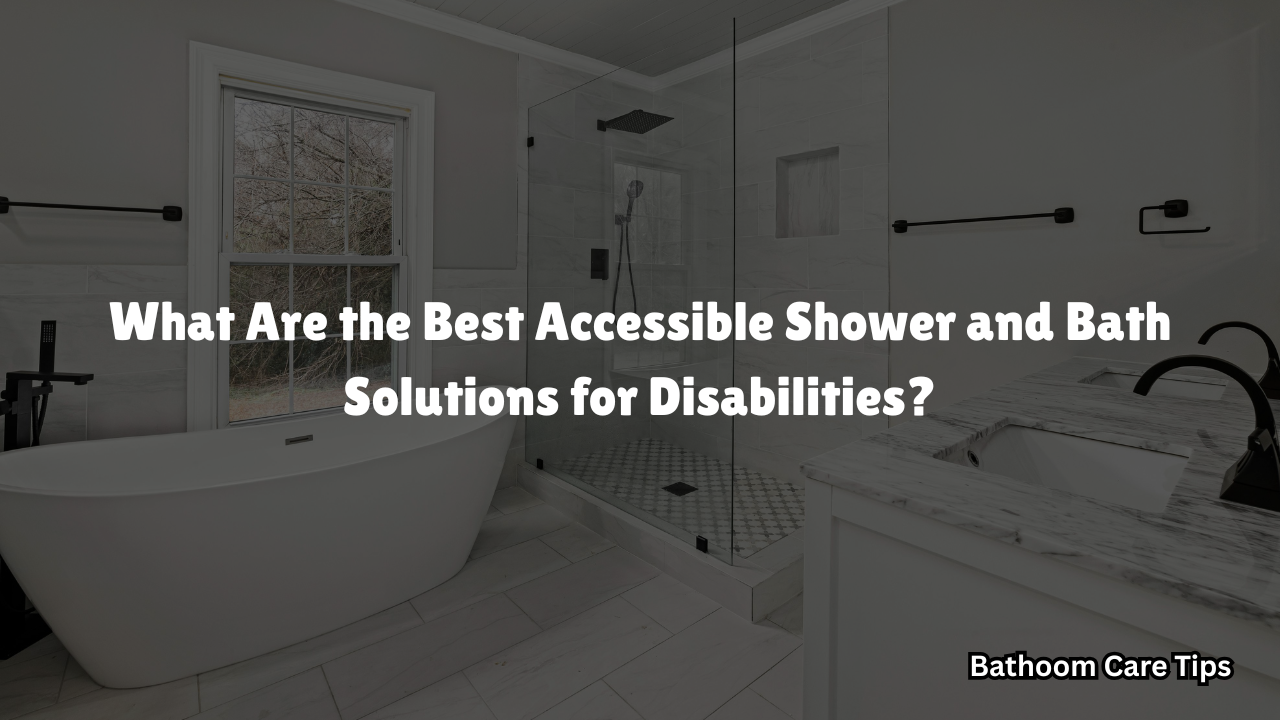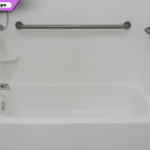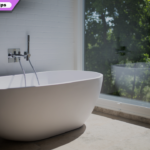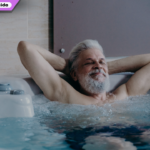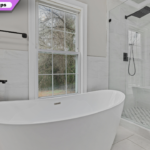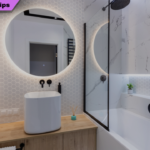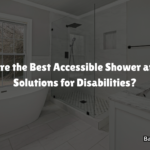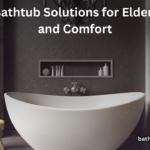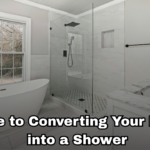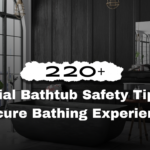Discover the best accessible shower and bath solutions for disabilities at BathroomCareTips.com. From roll-in showers to bath lifts, these 10 options ensure safety, independence, and comfort for wheelchair users, seniors, and those with mobility challenges in 2025.
Why Accessible Bathrooms Matter
Bathrooms pose significant risks for people with disabilities, with 81% of injuries caused by falls. Accessible shower and bath solutions reduce these risks, promoting independence and dignity. Designed for wheelchair users, seniors, or those with limited mobility, these adaptations make hygiene routines safer and more comfortable.
Benefits of Accessible Solutions
These solutions minimize trip hazards, support transfers, and enhance privacy. Features like grab bars, non-slip floors, and voice-activated controls cater to diverse needs, from visual impairments to arthritis. They’re stylish, durable, and often ADA-compliant, blending functionality with modern bathroom aesthetics. Check More Here:- A Best Guide to Converting Your Bathtub into a Shower (2025)
Types of Solutions
Options range from structural changes (e.g., wet rooms, walk-in tubs) to portable aids (e.g., shower chairs, bath lifts). Some focus on wheelchair access, others on seated bathing or minimal assistance. Costs vary from $50 for grab bars to $5,000+ for full remodels, suiting different budgets.
Who Needs These Solutions
Wheelchair users, seniors, and individuals with neuromuscular diseases, arthritis, or visual impairments benefit most. Caregivers also find these adaptations reduce physical strain. Assessing specific needs (e.g., balance, reach, strength) ensures the right solution for each user.
How to Choose and Install
Consult an occupational therapist to match solutions to disabilities. Consider bathroom size, budget, and future needs (e.g., progressive conditions). Professional installation ensures ADA compliance and safety, though portable aids require minimal setup. Always test equipment before regular use.
Accessible Solutions Overview Table
| Solution | Cost (Approx.) | Installation Time | Best For |
|---|---|---|---|
| Roll-In Showers | $3,000–$5,000 | 2–5 days | Wheelchair users |
| Walk-In Showers | $2,000–$4,000 | 1–3 days | Limited mobility |
| Walk-In Tubs | $4,000–$10,000 | 2–4 days | Seniors, arthritis |
| Wet Rooms | $5,000–$15,000 | 5–7 days | Wheelchair users, full access |
| Shower Chairs | $100–$500 | 10 min | Seated bathing |
| Bath Lifts | $500–$2,000 | 30 min | Bath lovers, limited strength |
| Grab Bars | $50–$200 | 1–2 hours | Balance support |
| Voice-Activated Showers | $1,000–$3,000 | 1–2 days | Visual impairments, dexterity |
| Portable Showers | $200–$1,000 | 20 min | Temporary or small spaces |
| Transfer Benches | $100–$300 | 15 min | Safe shower transfers |
10 Best Accessible Shower and Bath Solutions for Disabilities
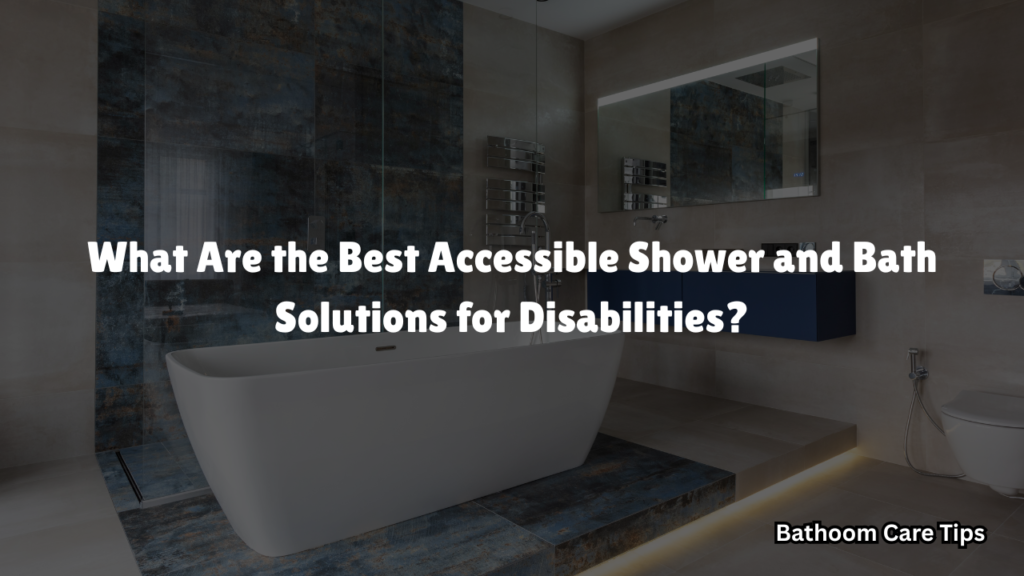
1. Roll-In Showers
Description: Barrier-free showers with no threshold, allowing wheelchair users to roll in. Features include slip-resistant floors, grab bars, and handheld showerheads.
Benefits: Maximizes independence; ADA-compliant. Ideal for full wheelchair access. Costs ~$3,000–$5,000.
Process: Hire a contractor to remove existing tub/shower, install a sloped pan, and add waterproofing. Takes 2–5 days. Test grab bar stability (30 min).
Applications: Use for daily bathing; add a shower chair for seated use.
Tip: Add a water retention dam to prevent splashing.
2. Walk-In Showers
Description: Low-threshold (1–2 cm) showers with minimal steps, often with glass partitions. Includes non-slip floors and fold-down seats.
Benefits: Safer for limited mobility; easier to clean than tubs. Costs ~$2,000–$4,000.
Process: Replace tub with a low-tray shower via a contractor (1–3 days). Adjust seat height (10 min).
Applications: Ideal for seniors or those with balance issues. Use handheld showerheads for flexibility.
Tip: Avoid sliding doors to maintain accessibility.
3. Walk-In Tubs
Description: Tubs with a side door for easy entry, equipped with seats, grab bars, and anti-slip surfaces. Some include jets for therapy.
Benefits: Allows soaking without climbing; great for arthritis. Costs ~$4,000–$10,000.
Process: Professional installation replaces standard tubs (2–4 days). Test door seal to prevent leaks (15 min).
Applications: Use for relaxing baths; caregivers assist with door operation if needed.
Tip: Ensure fast drainage to avoid waiting.
4. Wet Rooms
Description: Fully waterproofed bathrooms with open shower areas, flush drains, and non-slip flooring. Often include seats and grab bars.
Benefits: Ultimate accessibility for wheelchairs; stylish and spacious. Costs ~$5,000–$15,000.
Process: Contractor remodels entire bathroom, waterproofs walls, and slopes floor (5–7 days). Verify drain function (10 min).
Applications: Perfect for wheelchair users needing full maneuverability.
Tip: Add a weighted curtain for privacy.
5. Shower Chairs
Description: Fixed or roll-in chairs with non-slip feet, padded seats, and drainage holes. Some are height-adjustable or foldable.
Benefits: Enables seated bathing; affordable at ~$100–$500. Portable for travel.
Process: Place in shower; adjust height (10 min). No professional installation needed. Test stability before use.
Applications: Use for safe showering; caregivers can push roll-in models.
Tip: Pair with a handheld showerhead for ease.
6. Bath Lifts
Description: Battery-operated seats that lower and raise users in tubs. Features include padding, suction feet, and remote controls.
Benefits: Safe for bath lovers with limited strength. Costs ~$500–$2,000.
Process: Attach to tub base; charge battery (30 min setup). Test lift motion (10 min).
Applications: Use for soaking; removable for shared bathrooms.
Tip: Ensure battery is charged before use.
7. Grab Bars
Description: Wall-mounted stainless steel bars (12–48 inches) for balance and transfers. Often stylish (e.g., chrome finishes).
Benefits: Inexpensive ($50–$200); prevents falls. Easy to install in existing bathrooms.
Process: Secure to studs with a drill (1–2 hours). Test weight capacity (5 min).
Applications: Place near showers, tubs, or toilets for support.
Tip: Use dual-purpose bars (e.g., towel rack/grab bar) for aesthetics.
8. Voice-Activated Showers
Description: Smart showers controlled by voice commands (e.g., water temperature, pressure). Often include LED buttons for manual use.
Benefits: Ideal for visual impairments or dexterity issues. Costs ~$1,000–$3,000.
Process: Plumber installs system and connects to Wi-Fi (1–2 days). Pair with Alexa/Google (15 min).
Applications: Use for hands-free operation; caregivers monitor settings remotely.
Tip: Test voice commands in a quiet room for accuracy.
9. Portable Showers
Description: Freestanding units with water reservoirs, curtains, and handheld showerheads. Some are wheelchair-accessible.
Benefits: Flexible for small spaces or temporary needs. Costs ~$200–$1,000.
Process: Assemble per manual (20 min); fill reservoir. Place on a flat surface.
Applications: Use in garages or main floors without bathroom access.
Tip: Combine with an inflatable tub for full baths.
10. Transfer Benches
Description: Benches that straddle tub/shower edges, with non-slip seats and backrests. Some have sliding or swivel features.
Benefits: Simplifies transfers for seated bathing. Costs ~$100–$300.
Process: Position over tub edge; secure suction feet (15 min). Test weight limit (5 min).
Applications: Use for safe shower entry; caregivers assist with transfers.
Tip: Add a long-handled sponge for easier cleaning.
Disability-Specific Features Table
| Disability Type | Recommended Solutions | Key Features | Benefit |
|---|---|---|---|
| Wheelchair Users | Roll-In Showers, Wet Rooms | Barrier-free, wide entry | Full maneuverability |
| Limited Mobility | Walk-In Showers, Transfer Benches | Low threshold, seated transfers | Reduced trip risk |
| Arthritis | Walk-In Tubs, Shower Chairs | Seats, grab bars, jets | Pain relief, easy access |
| Visual Impairments | Voice-Activated Showers | Hands-free, LED controls | Independent operation |
| Neuromuscular Diseases | Bath Lifts, Shower Chairs | Powered lifts, padded seats | Minimal physical strain |
Tips for Implementing Accessible Solutions
- Assess Needs: Consult an occupational therapist to match solutions to specific disabilities (e.g., reach, balance).
- Plan for Future: Choose adaptable options (e.g., wet rooms) for progressive conditions.
- Hire Professionals: Use licensed contractors for structural changes to ensure ADA compliance.
- Test Equipment: Verify stability and functionality before regular use (10–30 min).
- Budget Wisely: Start with affordable aids (e.g., grab bars) before investing in remodels.
Conclusion
The best accessible shower and bath solutions for disabilities empower users with safety and independence. From roll-in showers to portable aids, these 10 options cater to diverse needs in 2025. Explore them at BathroomCareTips.com and share your accessibility tips on Facebook with #BathroomCareTips!
Frequently Asked Questions (FAQs)
1. What’s the most affordable accessible bathroom solution?
Grab bars ($50–$200) and shower chairs ($100–$500) are budget-friendly, requiring minimal installation.
2. Are walk-in tubs safe for seniors?
Yes, with low thresholds, seats, and grab bars, they reduce fall risks. Ensure fast drainage for comfort.
3. How do I make my bathroom wheelchair-accessible?
Install roll-in showers or wet rooms with barrier-free entries and grab bars. Widen doors if needed.
4. Can portable showers work in small spaces?
Yes, they’re compact and ideal for temporary setups in garages or main floors. Setup takes 20 minutes.
5. How long does a wet room installation take?
A full wet room remodel typically takes 5–7 days, depending on bathroom size and contractor.
